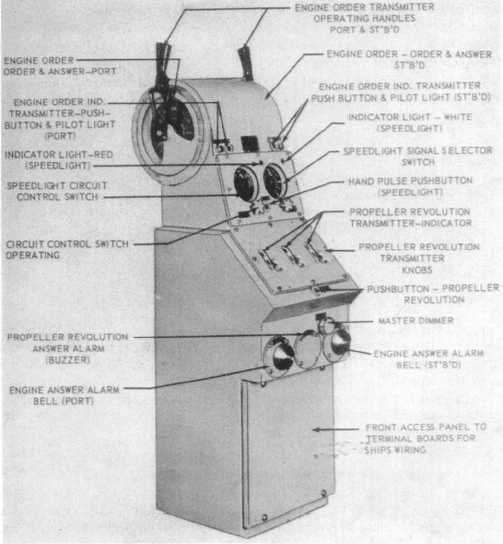| |
When standard speed is ordered, the number of
revolutions per minute required to produce that speed
must be set on the engine revolution telegraph if the
revolution counter is being used.
When not in use, the telegraph on the bridge may be
set to 999 or (on some telegraphs) to M (for
maneuvering). This setting indicates to the engineroom
that the ship is on maneuvering bells.
Although control of the engine order telegraph
usually can be shifted from the bridge to an after conning
station by a selector switch, control of the engine
revolution telegraph cannot be shifted in this manner in
most installations.
An engine revolution indicator (or tachometer) on
the bridge shows the number of revolutions per minute
actually being made by each shaft. This device is only
an indicator and is incapable of transmitting orders. See
figure 2-10.
CONSOLES
Many ships are equipped with ship control and
steering control consoles.
Ship control and steering control consoles normally
are installed in the pilothouse and serve as a direct
method of controlling the ship. These consoles
concentrate in one location many of the interior
communication units formerly scattered in several
places about the bridge. The units are combined in two
consoles, which usually weigh less and require less
space than if the same units were installed separately.
Components of the consoles are mounted so that they
are easily visible and accessible to the personnel
concerned with the control of the ship.
Ship Control Console
The ship control console contains equipment for
controlling the movements of a ship. Figures 2-11, 2-12,
and 2-13 show three types of ship control consoles in
Figure 2-11.— Ship control console.
2-9
|

